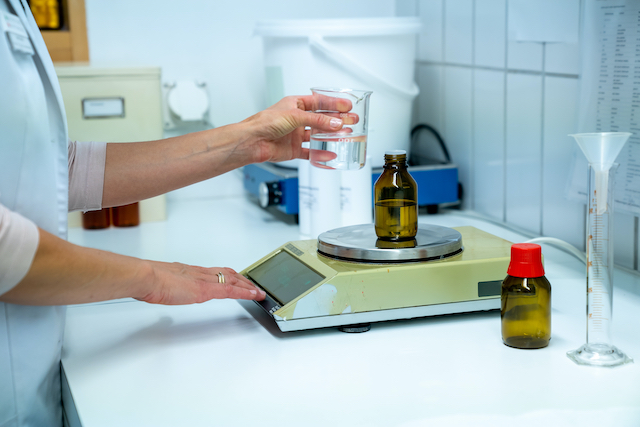
An essential part of maintenance is conducting regular balance verifications or testing.
You have invested in a high-quality balance for your laboratory, and you want to do everything you can to ensure that there are accurate, consistent results. An essential part of maintenance is conducting regular balance verifications or testing. What are the very best methods for testing your lab balance? Let us find out. Read on to learn why balance testing is so crucial and for a few ways to balance test properly.
What to Test For
The factors that should be regularly tested for include cornerload, repeatability, span, and linearity. Repeatability, otherwise known as reproducibility, is the capability to show the same weighing results when a weight is placed onto a scale more than once. Cornerload errors refer to any errors associated with the placement of the object on the weighing pan. The displayed results should be the same, regardless of where the object to be weighed is placed onto the pan. Corner loading is usually referred to as off-center loading in the lab. Then you have linearity, which is the ability of a weighing device to show the proper value throughout the entire weighing range. It might be tested by placing some calibration weights with a known value onto the balance from near zero into full capacity. Then, span refers to the difference between the weight of reading a given mass standard, like calibration weight, on your weighing device and the actual value of the standard.
Verification of Lab Balance
There are some different methods to verify the balance is operating correctly. Testing repeatability calls for repeatedly weighing a single object, then recording the results, and then analyzing them. Cornerload testing verifies that you will get the same result regardless of where you placed the object on the pan for weighing purposes. You can create a cornerload chart with headings of “front, right, rear, and left” for this. For linearity testing, which means your scale displays the right value throughout its entire weighing range, start by creating a linearity chart with two columns of 0 to 50 percent and 50 percent to 100 percent. You will then use two calibration weights, each around half the scale’s maximum capacity. The two weights, which could be referred to as Weight A and Weight B, shouldn’t be switched during the testing process. If you notice the balance is not weighing as it should, contact The Lab People for onsite service and assessment.
FOR ALL LAB EQUIPMENT AND LAB NEEDS, CONTACT LAB PEOPLE TODAY
The Lab People Inc. is a trusted provider of laboratory equipment, services, supplies, and rental equipment for you and your laboratory. As an ISO 17025 accredited service organization, we stand behind our services with 100% satisfaction guaranteed for all of our customers. We are here to provide you with the best lab equipment service, equipment, and supplies.
For more information about how we can assist you, visit our website, email us, or give us a call at 1-800-296-2001!
Do not forget to follow us on Facebook, Twitter, and Linkedin!